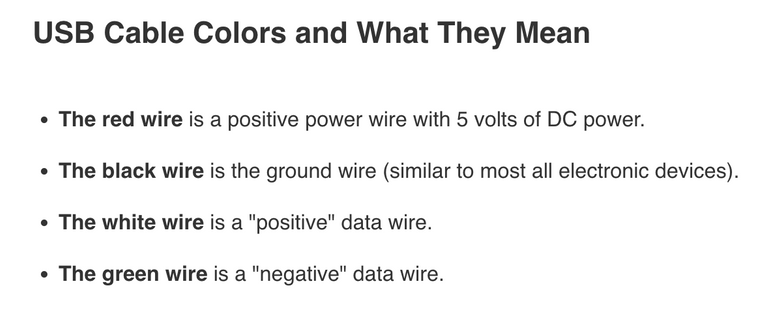
It was back in early December when I first showed you how it is possible to get around 5V from a configuration of nine copper cells with zinc-plated rods & damp soil. At that time I was using a glue gun to make my connections and this was not an effective system.

Since then I have been on the most incredible journey of discovery (electroculture & pyramids) but as spring approaches I am conscious of my aforementioned project to create an earth battery which sits in my garden for three months powering a waterproof camera, with the goal of creating a time-lapse film to categorically prove the effectiveness of electroculture alongside a control group.
With this in mind I spent the day re-designing my earth battery yesterday.
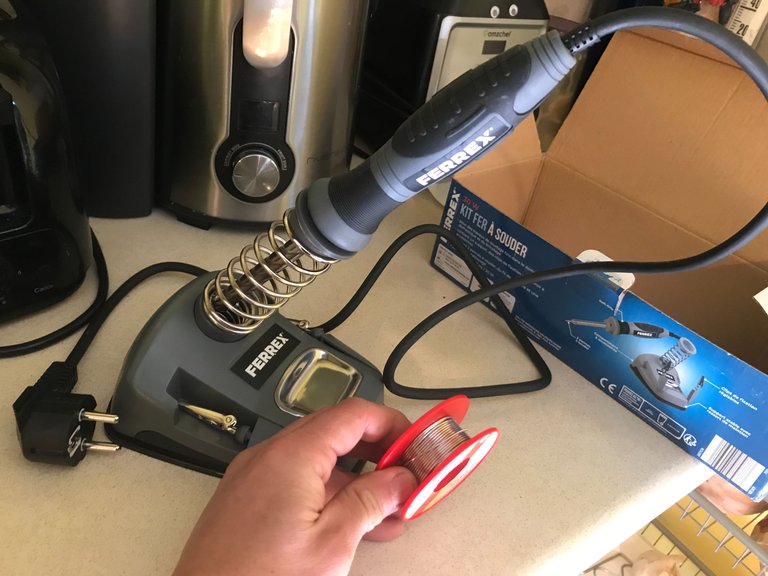
I had intended to solder the connections this time but failed to get hold of solder resin or the appropriate material to create an abrasive surface which would hold the solder in place (as recommended by @amberyooper) and for a while I was kicking myself for forgetting his message, unable to complete the job as intended.
I was at least able to fix this broken solar panel which charges a torch (with a USB port to power other devices too).

This is my first attempt at soldering!

Bit messy but it works. Just need to close it up now and make it waterproof again.
Never one to let a mistake stop the flow I figured out another way to make my earth battery connections solid.
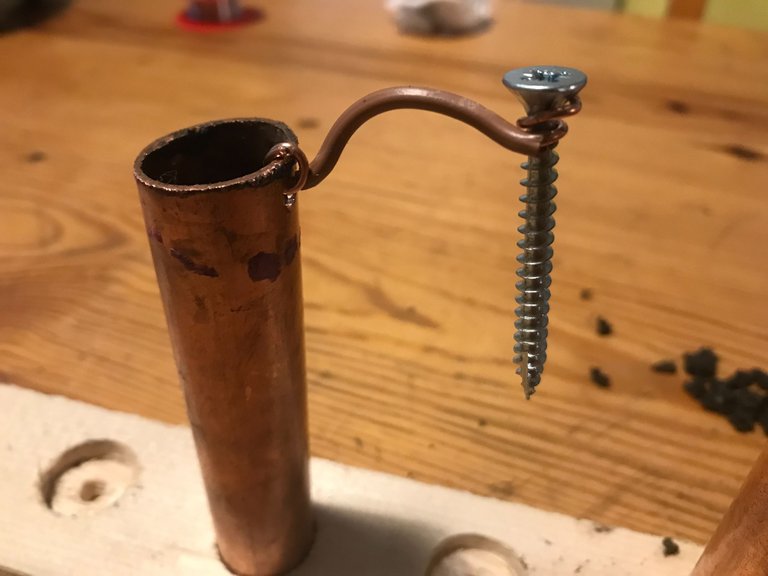
As you can see I am using screws this time instead of zinc-plated bolts and have drilled small holes in the top of each copper cell to complete the connection.

From a configuration of seven cells I was able to get around 5.2V. I say around because it fluctuates quite a lot from 4.4 to 5.4.
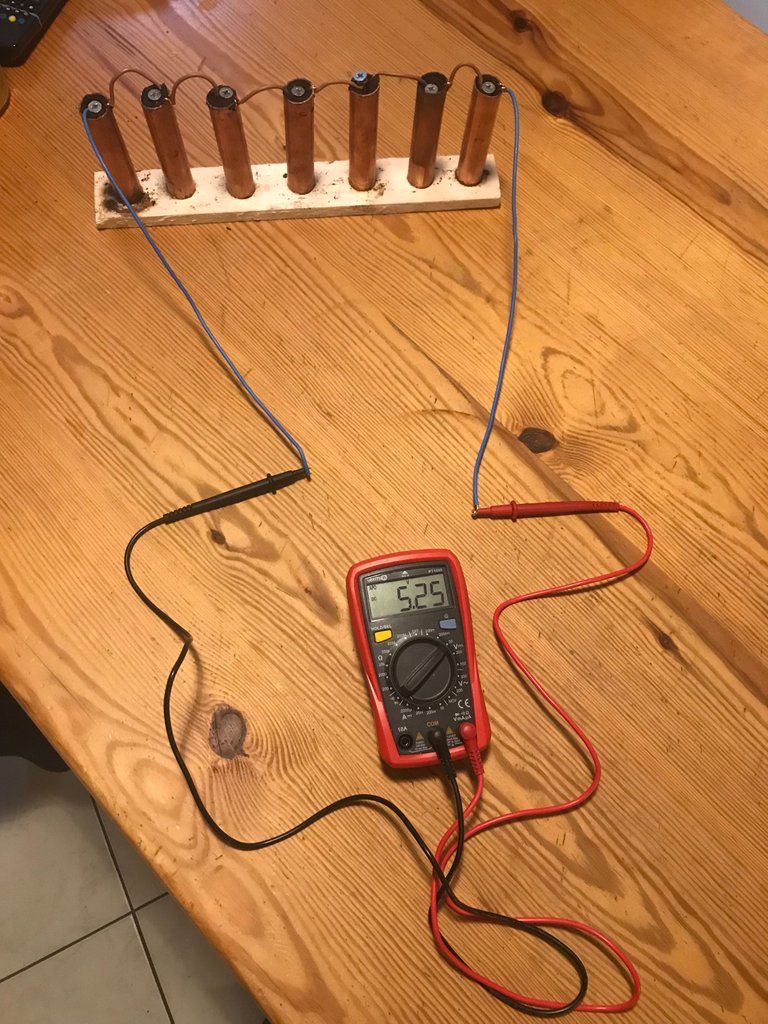
Interestingly the voltage actually jumps down when I make a loud noise or bash the table with my hand. Even my movement through the room seems to create small fluctuations.
The amperage was coming in at around 1A.
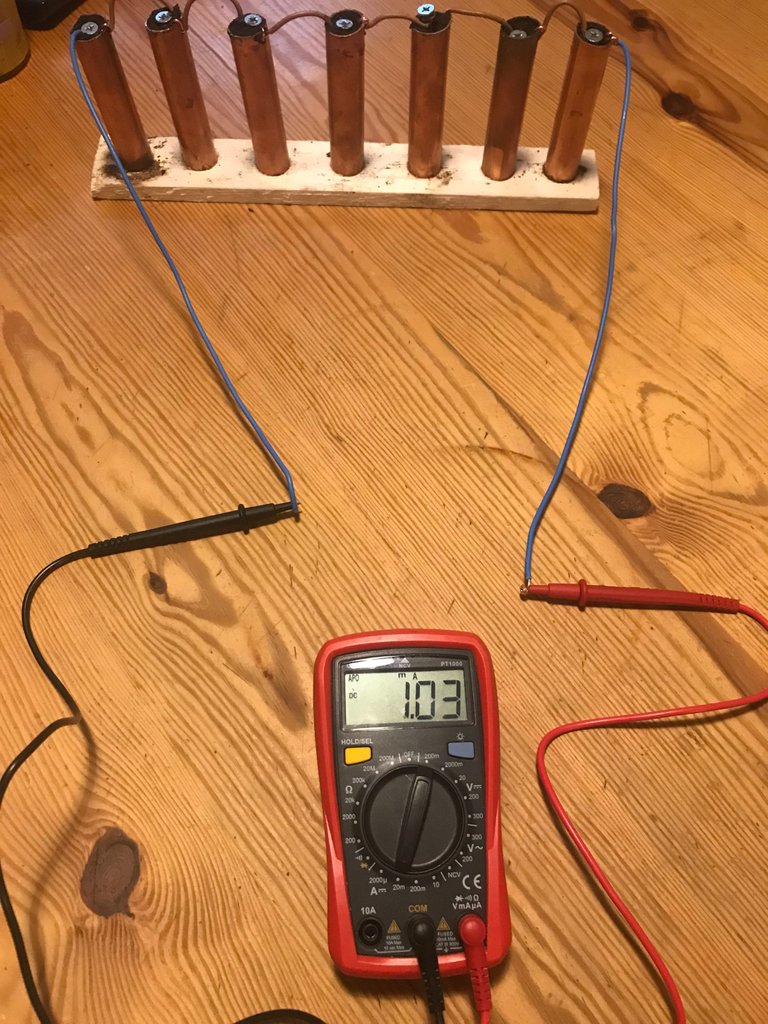
The Gopro camera I intend to use requires 5V 1A, so this fits nicely.
I noticed it was snowing outside in this moment and that one of the cats wanted to come in.

Checking the view on the other side of the house, our village currently looks like this.
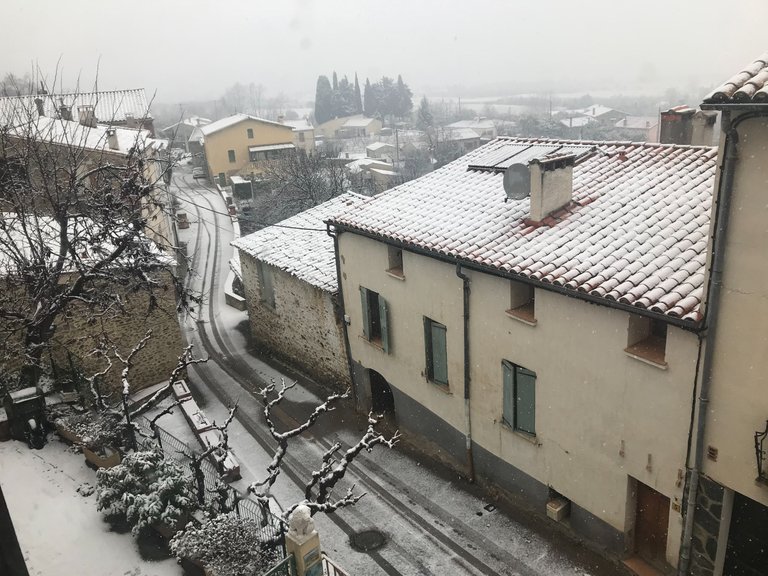
It snowed in April last year so I am conscious that we may have three months of this ahead of us now. I've mentioned this before but when I arrived in the South of France five years ago they told me it doesn't snow here any more because of global warming. Yeah right!

Getting back to my earth battery I first connected up this little light which normally requires a 3V battery.
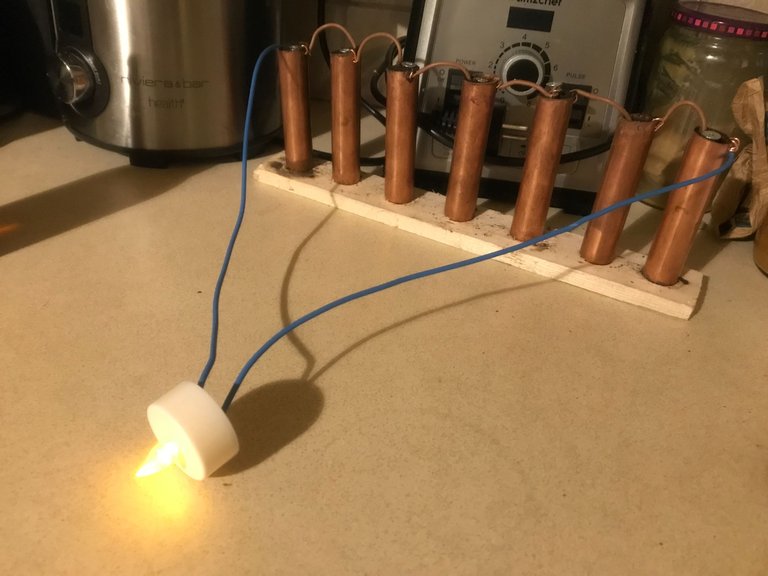
Turning the lights out it looks great! I could probably power a bunch of these lights in series with this set-up. Perhaps I will try that tomorrow.
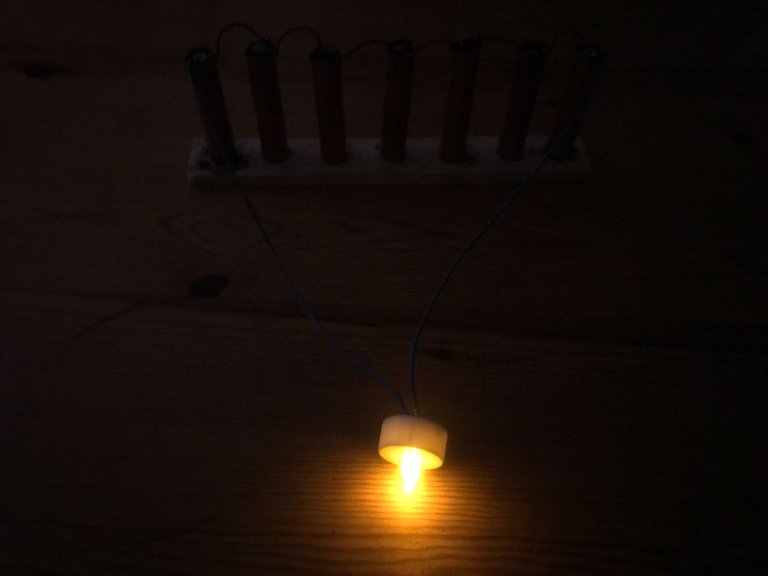
For now it is a night light for the children.

Please help!
I stopped at this point because I hit a brick wall.
According to this document the four cables found inside a USB type cable can be categorised in the following way.
I have a USB port here which I stripped back revealing the copper inside the red & back, as indicated above.
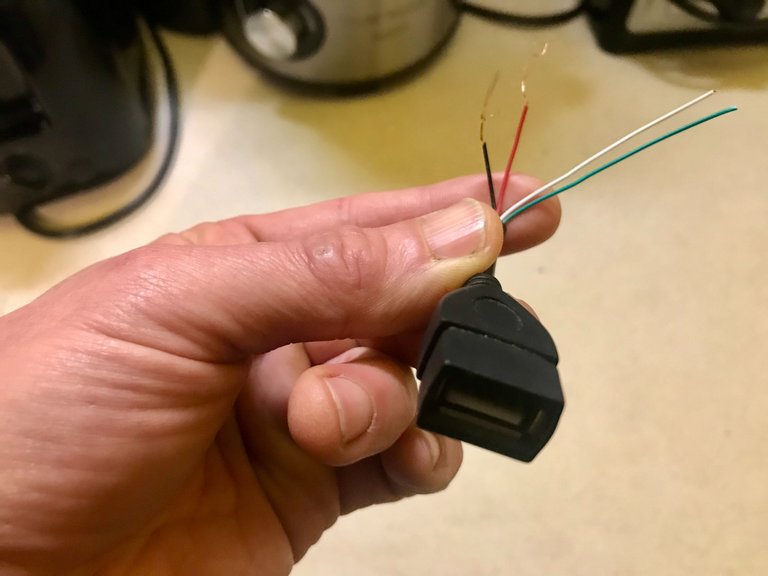
Upon connecting these wires to my earth battery however I am getting no reaction.
I tried many different types of USB cable in many different ways but I could not, no matter how hard I tried, get a charging light to appear on any device.
Do any of you happen to know what I should do to resolve this problem?
I watched a few vids before bed last night and found this guy who connects a USB port to a solar panel using a "buck converter/charger".
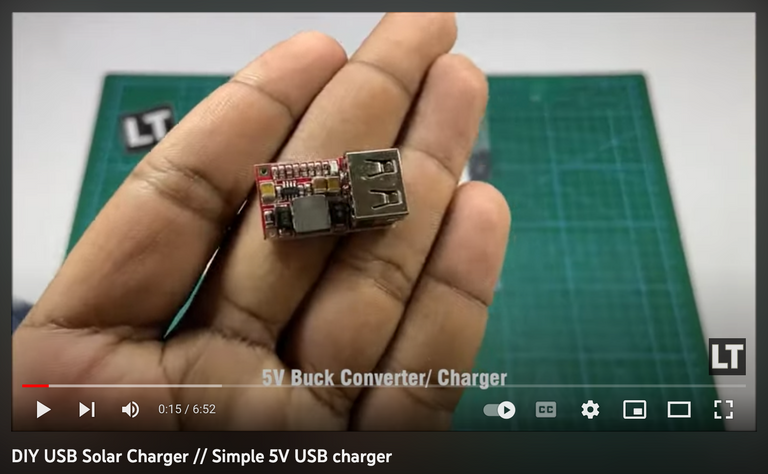
Looking into it I see this little device basically regulates the output to be consistent and bearing in mind what I mentioned earlier about the earth battery output not being consistent my feeling is that this is the solution.
But before I go ahead and buy one I just wanted to reach out to you, my Hive family, hoping someone can confirm I am buying the right thing.
Please tag your electrically minded friends and let's get to the bottom of this before the end of the week so I can show you how to power all USB devices from an earth battery.

Beyond this I am going to run a small light like the one shown in my children's bedroom indefinitely, posting an update at the bottom of every future post indicating the number of days the light has been on. The only fuel I will add is water, to keep the soil moist.

I wonder if USB heaters exist???
Could be useful moving forward.

Love & Light everyone 💡
UPDATE!
Since writing this post I have been in contact with the designer of the solar panel I fixed, an amazing man who knows the answer to most question I can throw at him, and his response was as follows:
USB needs a very stable voltage and therefore better to use a step up converter. There are 3 different types:
- boost = step up
- buck = step down
- buck boost = can do both
Efficiencies depend on what parts are used and who did the design... it can vary from just 50% up to 97%
